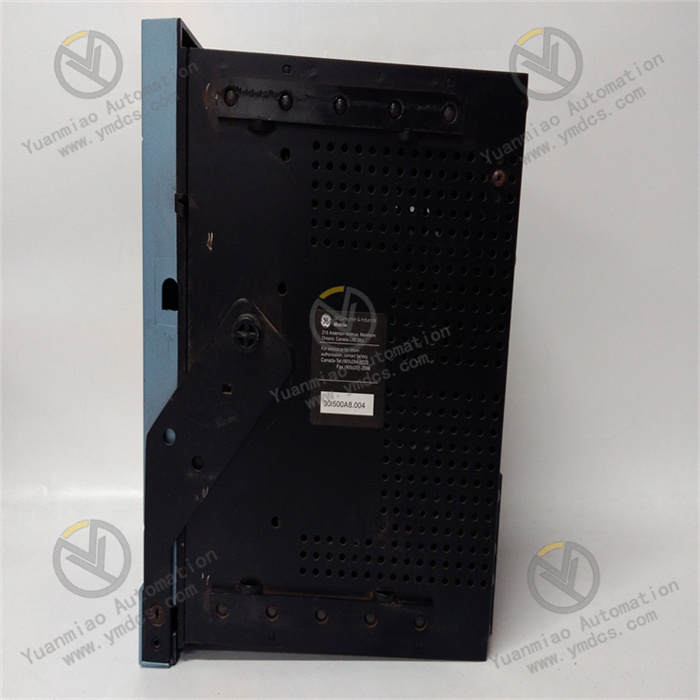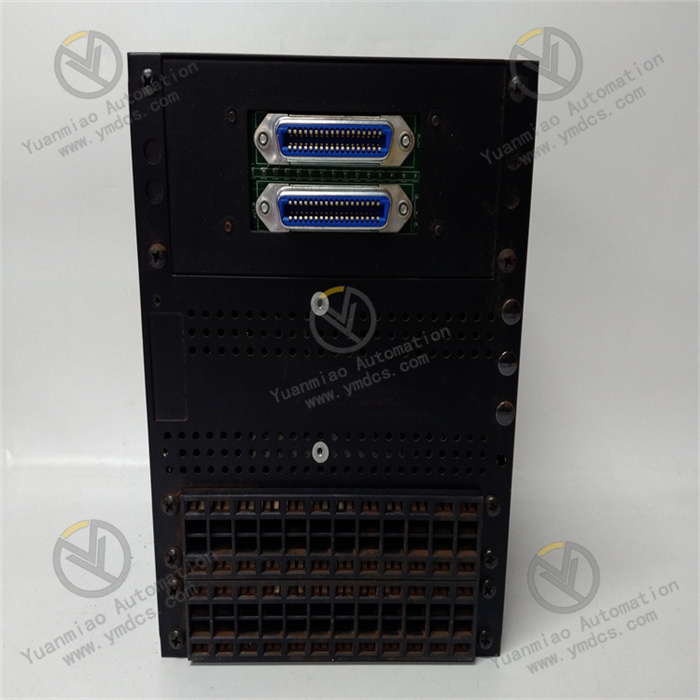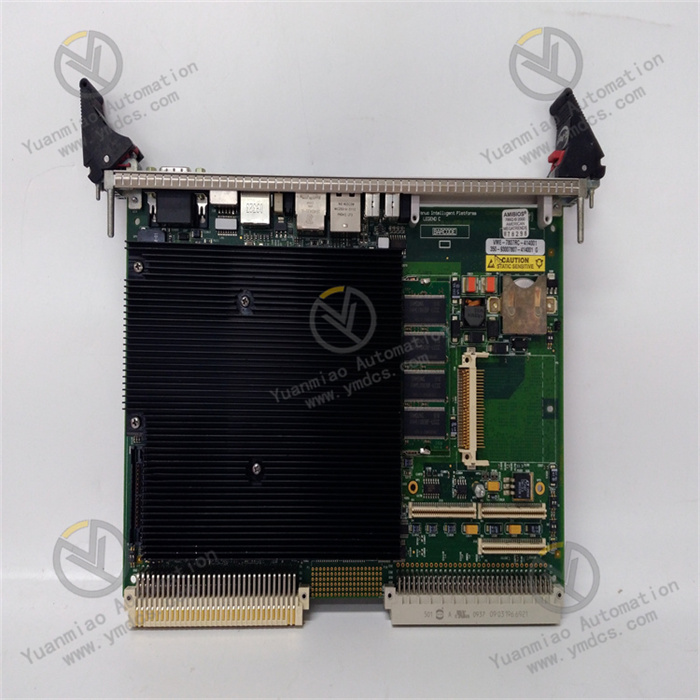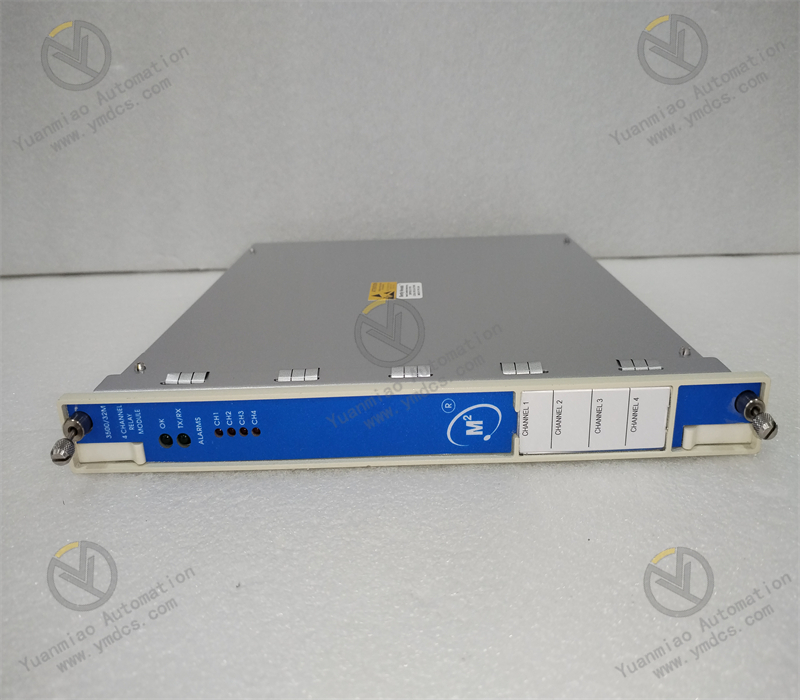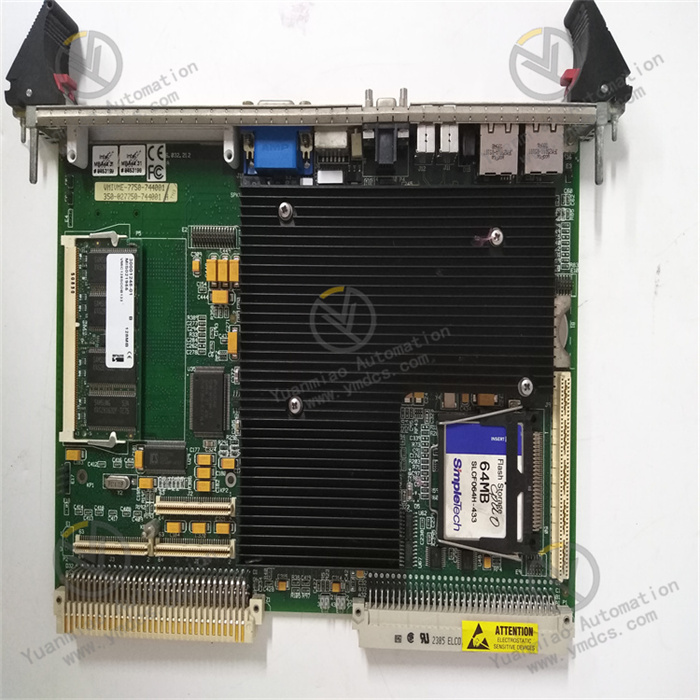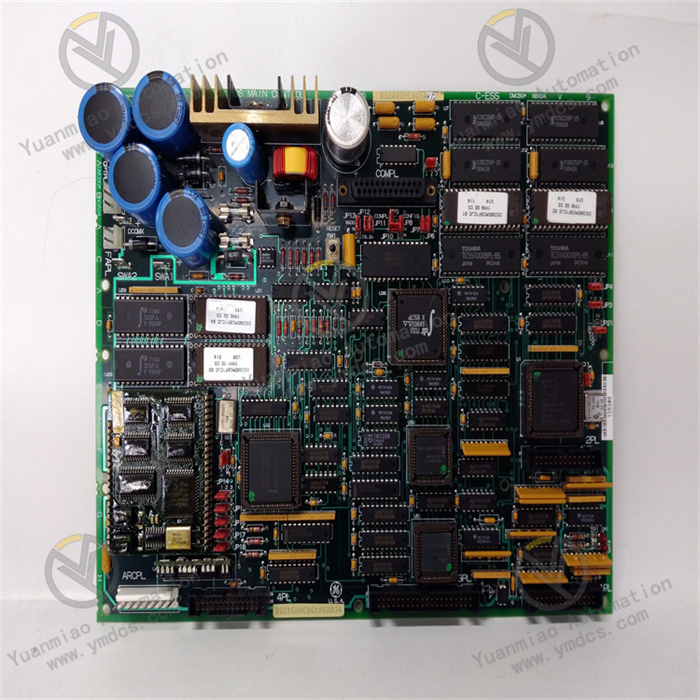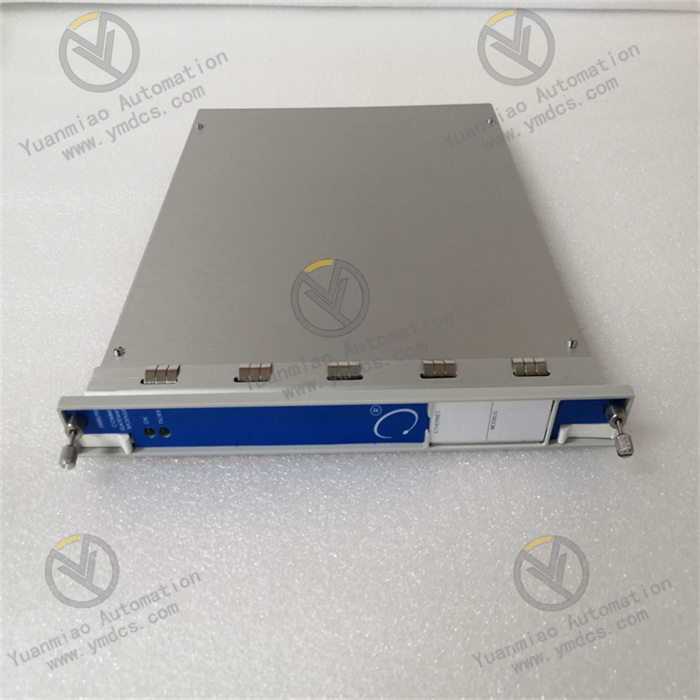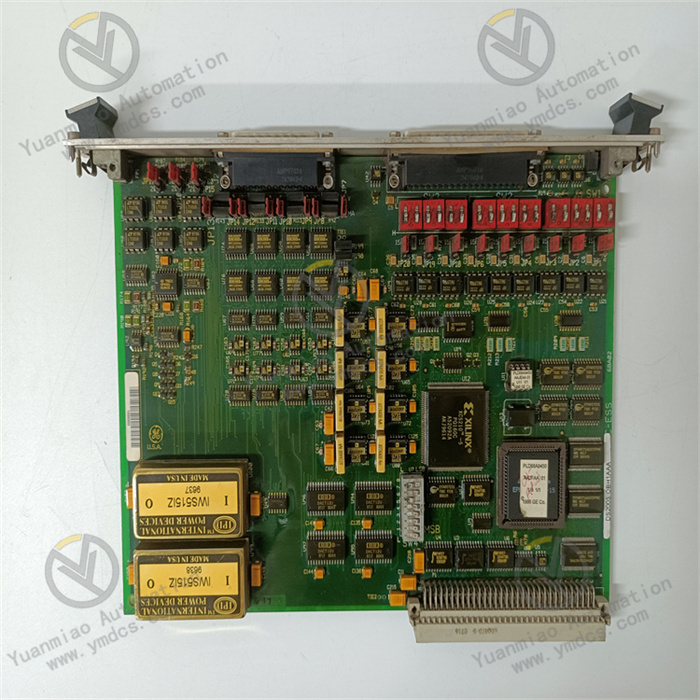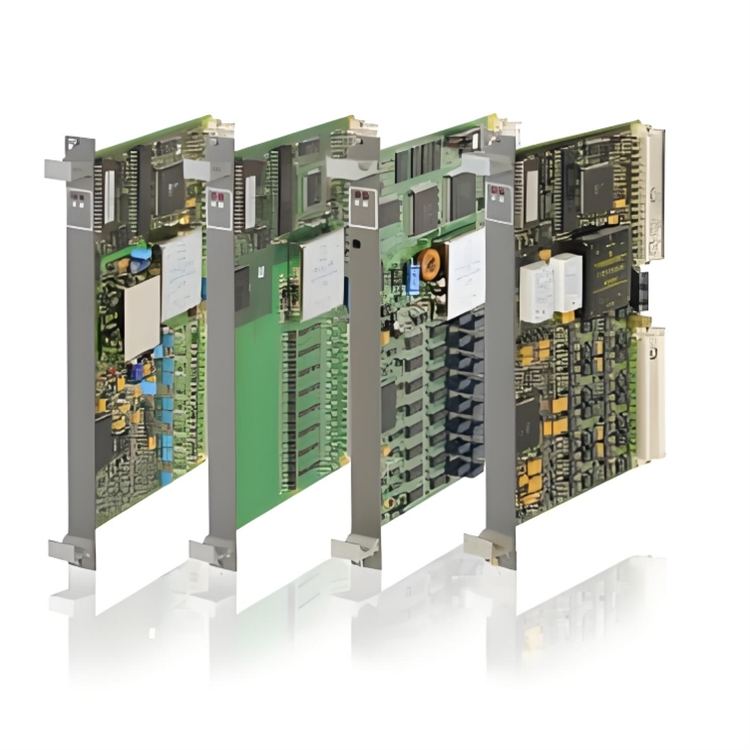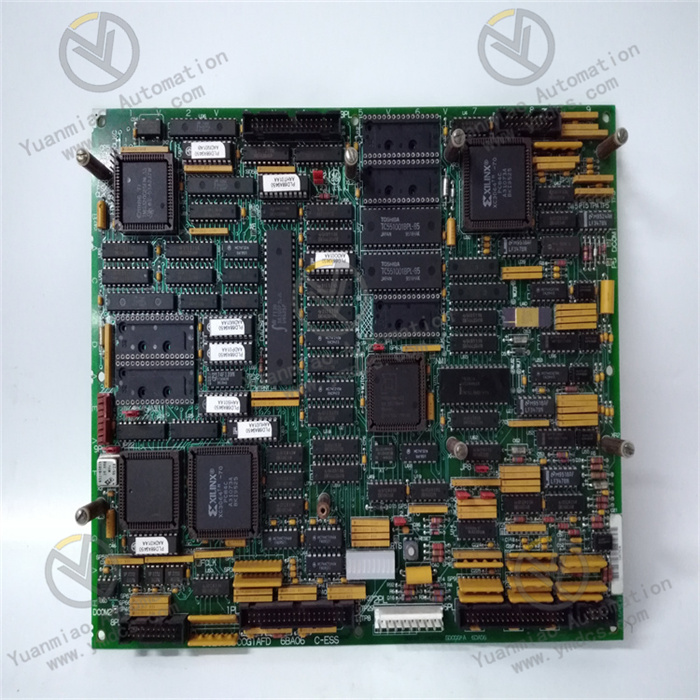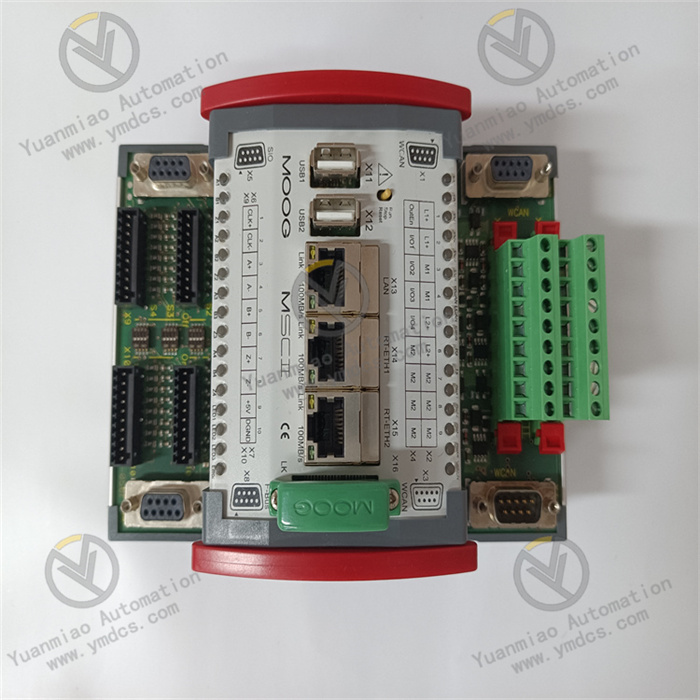Description
GE Multilin SR469-P5-HI-A20-E-H
I. Overview
The GE Multilin SR469-P5-HI-A20-E-H is a high-performance motor management relay meticulously crafted for the industrial automation sector, holding a significant position in GE Multilin's 469 series. Its core mission is to provide comprehensive and reliable protection as well as precise management for medium to large motors, being widely applied in various industrial scenarios with extremely high requirements for motor operation stability.
In terms of design, it integrates advanced microprocessor technology. With its powerful computing and processing capabilities, it can rapidly analyze and judge complex data during motor operation. In motor protection, it serves as a "versatile expert," capable of constructing a comprehensive protection system against common motor issues such as overload, short circuit, ground fault, and undervoltage. Upon detecting anomalies, it responds swiftly, promptly cutting off the circuit or taking effective measures like load reduction through precise control strategies to minimize damage to the motor from faults and ensure the safe and stable operation of the motor and the entire system.
The relay also demonstrates outstanding adaptability to harsh environments. Its housing and key internal components adopt special protective designs, equipped with conformal coatings suitable for harsh conditions. This coating is like a sturdy "protective suit" for the relay, not only effectively resisting corrosion from highly corrosive chemicals such as corrosives and hydrogen sulfide but also maintaining stable performance in high-humidity environments, significantly extending the relay's service life and enabling it to "overcome obstacles" and continue to function stably in complex and changeable industrial environments.
Furthermore, in terms of communication and interaction, it supports multiple mainstream communication protocols such as RS485 and Modbus TCP/IP, which are like building multiple unobstructed "information highways" for the relay. Through these protocols, it can achieve efficient and stable data interaction with upper-level systems and other related devices, easily integrating into various automation control system architectures. Whether in small local automation systems or large distributed industrial automation networks, it can seamlessly connect, providing solid technical support for realizing remote monitoring, centralized management, and automated control of motors.
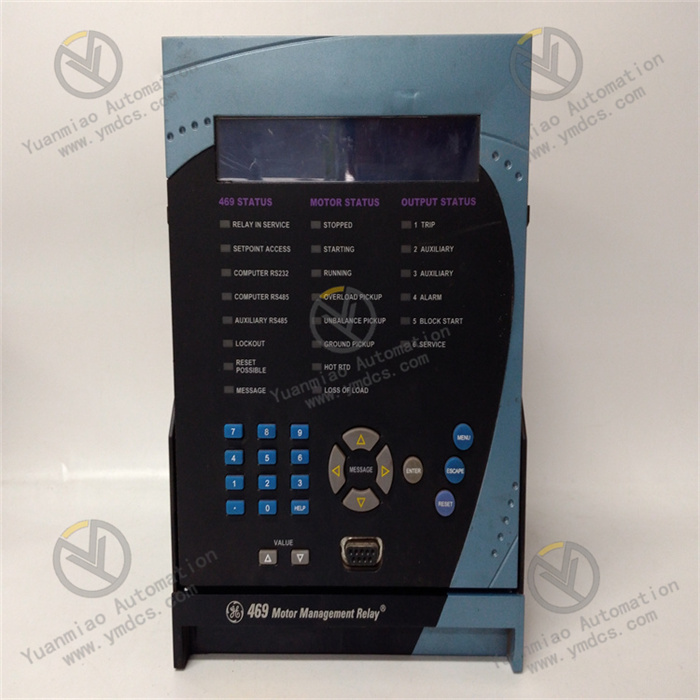
II. Technical Parameters
Power Parameters
- Operating Voltage Range: It can adapt to voltage fluctuations of 90-300VDC for DC power and stably operate within the voltage range of 70-265VAC for AC power, with an operating frequency range of 48-62Hz. This wide power voltage adaptation range allows it to be compatible with various types of power supply systems, ensuring stable operation in both high-stability premium power supply environments and complex industrial power supply scenarios with potential voltage fluctuations, providing continuous and reliable power support for the relay's functions.
- Power Consumption Characteristics: Although specific power consumption values are not explicitly given, it is inferred from its application scenarios and design philosophy that the relay fully considers energy-saving factors in design and has low power consumption characteristics. In long-term operation, it can effectively reduce energy consumption, which not only helps reduce enterprise operating costs but also conforms to the current development trend of energy conservation and environmental protection.
Electrical Parameters
- Current Specifications: With a 5A phase current input capability, this parameter enables it to accurately collect phase current data during motor operation. As one of the key parameters reflecting the motor's operating status, precise monitoring and analysis of phase current can promptly detect abnormalities such as overload and short circuit in the motor. Meanwhile, it is also equipped with matching 5A zero-sequence current input and 5A sensitive ground current input functions, specifically for detecting zero-sequence current and sensitive ground current changes in the motor system. The precise measurement of these parameters is of vital significance for quickly and accurately identifying potential safety hazards such as ground faults, providing key evidence for timely protective measures.
- Voltage-related Parameters: Although detailed parameters such as voltage measurement range are not specified, combined with its application in motor management and correlation with other electrical parameters, the relay must have voltage monitoring capability matching the 5A phase current input. Through real-time monitoring of motor operating voltage, important parameters such as motor power and power factor can be accurately calculated, enabling comprehensive evaluation and optimization of motor operating efficiency. In addition, from the perspective of actual operation requirements and product design reliability, it should have low voltage input burden characteristics to ensure stable operation under different voltage input conditions, reduce the impact of voltage fluctuations on equipment performance, and further improve motor operation stability and reliability.
Interface Parameters
- Analog Output: Equipped with four standard 4-20mA analog output ports, this standardized output signal can achieve convenient and efficient connection with external devices such as data acquisition modules and regulating actuators in various automation control systems. Through these analog output ports, the relay can accurately transmit various key status information during motor operation, such as current, voltage, temperature, and other parameters, in the form of analog signals to external devices, providing an effective data transmission channel for realizing remote monitoring, automated control, and system status analysis of the motor.
- Communication Interfaces: It provides a variety of communication interface options. The RS485 interface, with its excellent anti-interference capability and long-distance transmission characteristics, is widely used in the field of industrial automation and can meet the needs of reliable data communication between multiple devices; the RS232 interface is suitable for close-range device debugging and parameter setting, facilitating technicians to perform precise operations on individual relays; in addition, an optional Ethernet interface is available. With the rapid development of industrial intelligence and networking, the Ethernet interface can meet the needs of high-speed and large-data-volume transmission, enabling the relay to easily access the enterprise's network system and realize higher-level remote monitoring, data analysis, and deep integration with other intelligent devices. Meanwhile, the relay also supports multiple mainstream communication protocols such as Modbus and Profibus, which further enhances its compatibility and interoperability with automation devices of different brands and types, enabling seamless integration into various complex automation system architectures.
Physical Parameters
- Dimension Specifications: Its outline size is designed to be 200mm×165mm×80mm. This compact and reasonable dimension layout fully considers the limitations of actual installation space. Whether in an electrical control cabinet with limited space or an industrial site with strict requirements for equipment installation dimensions, it can easily find a suitable installation position, effectively saving space resources and improving equipment installation flexibility and space utilization.
- Weight Parameter: Weighing approximately 2.2 kg, the moderate weight not only facilitates handling, installation, and subsequent maintenance operations by technicians but also ensures the stability of the equipment after installation. During handling, it will not impose excessive physical burden on operators, and when the equipment is in operation, it can rely on its own weight to remain stable in various vibration environments, avoiding equipment shaking or displacement caused by excessive lightness, which may affect normal operation.
- Protection Level: The protection level reaches IP20-X, meaning the relay has a certain ability to prevent dust and foreign objects from invading. In industrial production environments, dust, debris, etc., may cause damage to electrical equipment, and the IP20-X protection level can provide basic protection for the relay, ensuring that its internal electronic components are protected from dust and other tiny particles, maintaining the normal operation and service life of the equipment.
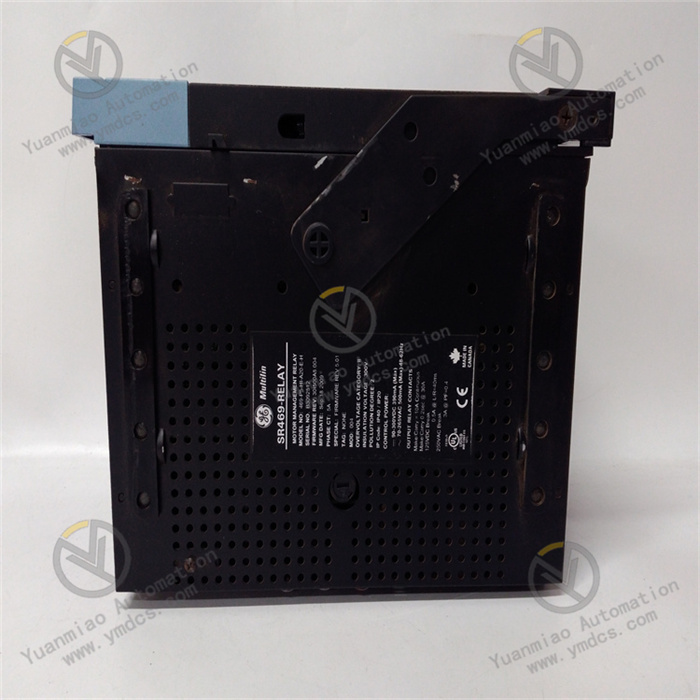
III. Functional Features
Comprehensive and Meticulous Protection Functions
- Overload Protection: It real-time and accurately monitors the current change of the motor. Once the motor current is detected to exceed the preset overload threshold, it quickly activates the protection mechanism. By promptly cutting off the motor power or adjusting the motor operation parameters, such as reducing the motor output power, it avoids the motor winding from overheating and burning due to long-term overload operation, effectively extends the motor service life, and ensures the motor runs stably within a safe load range.
- Short Circuit Protection: With its high-speed and sensitive current detection capability, it can instantly identify short-circuit faults in the motor circuit. When a short circuit occurs, the relay acts immediately, cutting off the circuit at an extremely fast speed to prevent the short-circuit current from causing 毁灭性 (devastating) damage to the motor and other related equipment, ensuring the safe and stable operation of the entire power system.
- Ground Fault Protection: Using the 5A zero-sequence current input and 5A sensitive ground current input functions, it closely monitors the ground current in the motor system. Once abnormal ground fault current is detected, it quickly sends an alarm signal and takes protective measures such as cutting off the power in a timely manner to avoid electric shock accidents and other more serious power accidents caused by ground faults, comprehensively ensuring personnel safety and normal equipment operation.
- Undervoltage Protection: It continuously monitors the power supply voltage of the motor. When the voltage is lower than the lower limit of the normal working range, it timely triggers the undervoltage protection function. By automatically cutting off the motor power or taking corresponding voltage regulation measures, it prevents problems such as torque reduction, unstable speed, or even burning of the motor when operating under low voltage, ensuring the motor runs stably under appropriate voltage conditions.
- Other Potential Protection Functions: Combining the characteristics of this series and the common needs of motor protection, it is speculated that it may also have functions such as overvoltage protection, phase sequence protection, phase loss protection, and 堵转 (locked rotor) protection. Overvoltage protection can timely cut off the circuit when the voltage rises abnormally to prevent excessive voltage from breaking down the motor insulation; phase sequence protection can ensure that the motor starts and runs according to the correct phase sequence, avoiding motor reversal or failure to start normally due to phase sequence errors; phase loss protection can take protective measures promptly once a phase power failure is detected during motor operation to prevent motor damage due to single-phase operation; locked rotor protection responds to the situation where the motor rotor may be 卡住 (stuck) and unable to rotate during operation, avoiding motor winding burning due to locked rotor. These diverse protection functions collaborate closely to build an impregnable safety protection network for the motor.
Precise and Efficient Measurement and Monitoring Functions
- Basic Power Parameter Measurement: It can perform high-precision measurement of key power parameters during motor operation, such as current, voltage, power, and power factor. Through the real-time and accurate acquisition of these parameters, it provides intuitive and reliable data support for operation and maintenance personnel, enabling them to clearly and accurately grasp the motor's operating status. For example, by monitoring the power factor, operation and maintenance personnel can judge the motor's power utilization efficiency and then take corresponding optimization measures, such as adjusting the motor load distribution and optimizing the motor control strategy, to improve the motor's operating efficiency and reduce energy consumption.
- Harmonic Monitoring Capability: In view of the increasingly prominent harmonic problems in modern industrial environments, harmonic interference may have serious impacts on the normal operation of the motor, such as causing motor heating, increased vibration, and noise. The relay is highly likely to have monitoring functions for parameters such as individual harmonics and total harmonic distortion. Through real-time monitoring of harmonics, it can timely detect harmonic interference sources in the power system, evaluate the degree of harmonic impact on motor operation, and take effective harmonic governance measures in advance, such as installing harmonic filters, to ensure the stable operation of the motor and the normal service life of the equipment.
- Temperature Monitoring Function: Considering that temperature is one of the important indicators reflecting the motor's operating status during operation. Excessive temperature may lead to motor winding insulation aging, performance degradation, or even burning. Therefore, the relay may be equipped with a temperature sensor or an interface for connecting with an external temperature sensor, capable of real-time monitoring of temperature changes in key parts such as the motor winding temperature and bearing temperature. Once the temperature exceeds the normal range, it promptly sends an alarm signal and takes corresponding cooling measures, such as starting a cooling fan and reducing the motor load, to ensure the motor runs stably in a suitable temperature environment.
Flexible and Convenient Communication and Configuration Functions
- Support for Multiple Communication Protocols: It supports multiple communication methods such as RS485, RS232, and Ethernet, and is perfectly compatible with mainstream communication protocols such as Modbus and Profibus. This wide communication compatibility enables the relay to seamlessly integrate with various automation system architectures, easily realizing equipment access and data interaction in both small local automation control systems and large distributed industrial automation networks. For example, in an industrial production line automation control system composed of multiple motors, through the RS485 communication interface and Modbus communication protocol, the relay can carry out high-speed and stable data transmission with the upper-level system and other motor management devices, realizing centralized monitoring and unified management of the motor operating status of the entire production line.
- Convenient Configuration Method: By connecting a computer running GE Multilin's specific configuration software to the relay, it provides users with a powerful and easy-to-use configuration interface. Users can flexibly set various parameters of the relay in this interface, including protection function action thresholds, time delays, communication parameter baud rates, communication addresses, etc. Meanwhile, the relay is also equipped with a simulation test function, allowing users to simulate various motor fault conditions and normal operating states on the computer to comprehensively test the relay's operation. Through simulation testing, users can discover potential problems in advance and optimize and adjust the relay's parameters, greatly improving the efficiency and accuracy of equipment configuration and reducing the difficulty of equipment debugging and maintenance.
High Reliability and Environmental Adaptability
- High-quality Manufacturing Guarantee: During the product manufacturing process, GE Multilin selects high-quality raw materials and uses advanced manufacturing processes and strict quality detection systems. The internal electronic components of the relay are carefully screened and strictly tested to ensure that each component has excellent performance and reliability. In long-term operation, these high-quality components can work stably, effectively reducing equipment downtime caused by component failures, lowering maintenance costs, and providing users with a reliable use experience.
- Environmental Adaptability Design: Aiming at various complex challenges that may be faced in industrial environments, the relay fully considers environmental adaptability in design. For example, in industrial sites with severe electromagnetic interference, through means such as optimizing circuit layout and adopting shielding technology, it has good electromagnetic interference resistance, can work stably in complex electromagnetic environments, and is not affected by external electromagnetic interference; in some places where chemical corrosion risks may exist, its housing and internal structure adopt corrosion-resistant materials or protective coatings to ensure that the relay can also operate normally in harsh chemical environments, effectively extending equipment service life. In addition, in terms of temperature and humidity adaptability, the relay can work stably in a wide temperature range (such as -40°C to +85°C) and high humidity (such as 95% non-condensing), reliably playing its role in protecting and managing motors whether in cold northern industrial areas or high-temperature and humid southern industrial environments.


